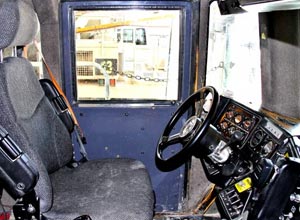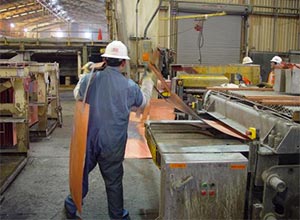 Ergonomics (or human factors engineering, as it was originally known in the USA) historically involved the study and improvement of human-machine systems. The desire to improve human performance can be traced to pre-historic times, through changes in tools and weapons which improved hunting and warfare performance. The modern field of ergonomics developed out of military necessity during the Second World War. Early in the war, pilots and operators were commonly blamed for the failings of their airplanes, tanks, and ships. As losses mounted, the mismatch between operator abilities and equipment characteristics became painfully clear: The failures were often due to factors beyond the operators' control. Tactical necessity compelled the world's militaries to re-think design and build their equipment around the ergonomic needs of their soldiers.
Ergonomics (or human factors engineering, as it was originally known in the USA) historically involved the study and improvement of human-machine systems. The desire to improve human performance can be traced to pre-historic times, through changes in tools and weapons which improved hunting and warfare performance. The modern field of ergonomics developed out of military necessity during the Second World War. Early in the war, pilots and operators were commonly blamed for the failings of their airplanes, tanks, and ships. As losses mounted, the mismatch between operator abilities and equipment characteristics became painfully clear: The failures were often due to factors beyond the operators' control. Tactical necessity compelled the world's militaries to re-think design and build their equipment around the ergonomic needs of their soldiers.
 Eventually the desire for better human-machine performance spread through industry. A new emphasis on injury reductions led to further studies which considered the mismatch between people and tasks. Much of the early work on human physical capability was done in Europe; however, by the 1970s, U.S. researchers were focused on the importance of job and task design as a means to limit musculoskeletal injuries. Back injuries were of particular interest, because they were the most frequent and costly. Over time, researchers have come to understand the significant relationship between human capacity — both physical and psychological — and task-induced external load. As a result, interests have gradually expanded to consider all forms of musculoskeletal injury.
Eventually the desire for better human-machine performance spread through industry. A new emphasis on injury reductions led to further studies which considered the mismatch between people and tasks. Much of the early work on human physical capability was done in Europe; however, by the 1970s, U.S. researchers were focused on the importance of job and task design as a means to limit musculoskeletal injuries. Back injuries were of particular interest, because they were the most frequent and costly. Over time, researchers have come to understand the significant relationship between human capacity — both physical and psychological — and task-induced external load. As a result, interests have gradually expanded to consider all forms of musculoskeletal injury.
Musculoskeletal injury remains the focus of ergonomics today. In designing equipment or tasks, there are many key questions to consider: What is reasonable to expect from people? How much can an individual safely lift, push, or pull without being overloaded? How do overload constraints vary with body posture and time on task? How variable is that within the individual (day-to-day variability due to fatigue, yesterday's activity, etc.) and between individuals (the large young active male versus the small elderly sedentary female)? How long can an individual focus on a task, and what factors affect focus? What can people hear, see, feel, or otherwise perceive about their jobs, and how does this perception change with time? As we understand these and related ergonomics factors, we can design jobs within the capacity of the workforce, and therefore yield more consistent performance with fewer musculoskeletal injuries.

